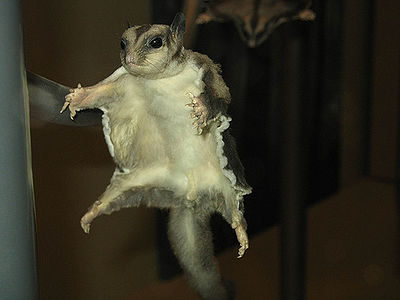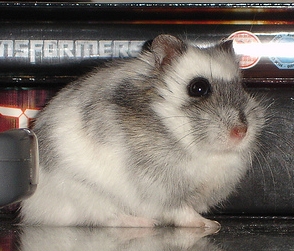Contents |
Appearance
Mice vary in size a great deal, with Fancy mice usually falling between 16-18cm (6.3-7.1 inches) and show mice measuring up to 30cm (12 inches). Pet mice usually weigh between 25-50g but show mice can weigh up to 100g.
Colors are varied and include black, chocolate, blue, white, cream, lilac, red, fawn, champagne, cinnamon, golden agouti, silver agouti, silver and dove. These colours will fall within the following categories:
- Selfs – one solid color all over.
- Tans – mice of one solid color on the top with a tan belly.
- Marked – either in Even or Broken patterns (spotting of a standard color on a base of white).
- Satins – mice with fur of a high gloss sheen.
- AOV – Any other variety, mouse of any other standardised variety.
What are Mice like as pets?
Fancy mice are small, inexpensive, clean and can be very friendly. They are very sociable rodents and must be kept in a minimum of a pair – although, since they should not be kept singularly it is recommended to get a minimum of three so that an unexpected loss does not leave you with one alone.
Deer mice are clean, and can be caught in the wild. They tend to have fewer illnesses than white and fancy mice and can live longer – up to three years. Unfortunately, deer mice are often not very tame and are usually very shy. See more: Captive-bred vs.Wild Caught Pets
Male mice (Bucks) are harder to house together than females (Does) and are more likely to fight unless introduced at a very young age. However, male mice can be neutered through a trusted vet and then introduced to groups of girls to prevent them having to live alone.
Mice are a very inquisitive pet but need careful handling to tame as they can be very shy. The personalities of mice will vary as widely as any other animal, so it is likely that some in your group will enjoy human contact whilst others may never grow accustomed to it.
Cage and habitat
A wired cage with bars of 1cm width or less is ideal for mice. Females in particular love to climb, and the bars allow excellent ventilation and offer ample opportunity for hanging various hammocks and toys. A good guide to go with is to use the fancy rats cage calculator at http://www.fancy-rats.co.uk/information/guides/cagecalculator/ and simply double the number it gives you.
For reasons why you should not choose a modular system such as Rotastak or Habitrail see this external article on Why modular systems are bad for your pets
Bedding can consist of a dust-free material such as carefresh or megazorb and can be supplemented with a layer of hay and some soft beddings. Sawdust is damaging to the lungs of small animals and should not be used for any rodent.
They need space to burrow and as they are very active and curious rodents, will need plenty of toys to keep them occupied and prevent them from getting bored. Luckily, if price is an issue plenty of househould items such as cardboard boxes or tubes can be made safe for their use.
Mice enjoy climbing, chewing and burrowing and will almost certainly benefit from a wheel. Wheels must have a solid base, as mice can get tails or feet trapped in spoked wheels. It is also important to ensure that the wheel is large enough – the small size ‘silent spinner’ is advertised as suitable for mice but can actually carry the risk of spine damage for an adult mouse. It is safer to opt for the medium size.
As a starting point for mouse toys, consider the following:
- Cardboard boxes – ensure sellotape, staples etc. are first removed.
- Cardboard tubes from the middle of toilet roll or kitchen towels.
- Hammocks – smaller hammocks or cubes are loved for sleeping in.
- Rope – of a natural variety, sisal or similiar. If you have a wire or mesh roof you can clip rope with clothes pegs on the outside.
- Stuff to shred such as tissue, newspaper. A layer of hay is also useful for this.
- Wheels – with a solid base only!
- Wooden toys – such as hamster bridges, climbing walls or ladders.
Feeding
Although commercially available mixes are available for mice, these are, like the cages petshops often recommend, just not suitable. Water should be constantly available, ideally in bottles, and in at least two places.
For guides on mixing your own mouse mice see http://www.allaboutmice.co.uk/feeding/ as you will find a lot of the ingredients will be already in your cupboards!
Fresh vegetables and some fruits can be fed on a semi-regular basis – but first please check this list of foods to avoid http://www.allaboutmice.co.uk/foods-to-avoid/
External Websites
- Excellent and knowledgeable mouse forums: http://www.micearenice.co.uk/
- AllAboutMice guides: http://www.allaboutmice.co.uk/
- London based Rescue for Mice and other small rodents: http://www.starlighttrust.org.uk/
- Crittery’s guide to fancy mice: http://www.crittery.co.uk/fmice/mice.php



